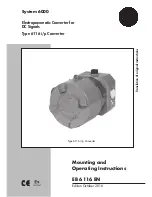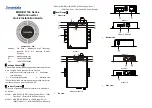
To ground the generator, first:
1. Tighten the grounding wing nut onto a grounding wire
(see figure D).
2. Attach the other end of the grounding wire to a
grounding rod (brass or copper) that is driven into the
earth.
3. Since grounding codes may vary depending on location,
please consult a local electrician to find out about codes for
GROUNDING THE GENERATOR
Whether this is the first time you will be using your
generator or not, follow the checklist below before EACH
use to ensure best maintenance and safety practices.
1. Place engine on level surface and clean around oil fill
cap.
2. Remove dipstick/cap, (see figure C) wipe with clean
cloth, check oil level on dipstick as shown.
3. Oil should be at FULL mark. (see figure B) If additional
oil is required, add slowly.
4. Replace and tighten dipstick/cap firmly before starting
engine.
1. Use clean, fresh, lead-free, regular gasoline with a
minimum of 87 octane.
2. Do not fill to top of tank. Leave room for gasoline to
expand. Check fuel gauge on top of tank for current
fuel level.
3.
make sure that the generator is on a level
surface when fueling.
4. Be sure to wipe up any gasoline spills before starting
the engine.
1. T
2. Do not fill to top of tank. Leave room for gasoline to
expand. Check fuel gauge on top of tank for current
fuel level.
3.
Check the oil:
Check the gas:
Ground the generator:
ALWAYS
ighten the grounding wing nut onto a grounding wire.
Attach the other end of the grounding wire to a
grounding rod (brass or copper) that is driven into the
earth.
IMPORTANT STEPS BEFORE USE
Copyright 2012 DTX International
10
DANGER! Failure to ground your generator
properly can result in serious injury, shock or
electrocution! Please follow the recommended
grounding guidelines for your locality. Check
with a certified electrician.
PRE-START CHECKLIST
WARNING:
The generator must be properly
grounded. Failure to properly ground
the generator can result in electrocution.
Ground the generator by attaching a stranded
copper No. 12 AWG wire to the grounding nut
located on the control panel. (figure D) The
grounding wire should be connected with a
clamp to a brass or copper rod that is driven
into the earth. Consult a qualified electrician to
insure a safe and proper grounding.
Your generator has a system ground that is not
connected to the AC neutral wire
WARNING: To avoid back feeding into utility systems,
isolation of the residence electrical system is
required. Before temporary connection of the
generator to the residence electrical system, turn off
the main service disconnect. Consult a qualified
electrician before use.
Figure D











































